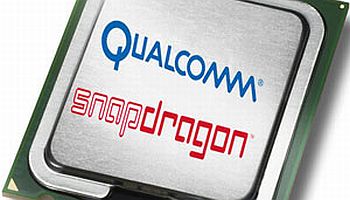

Qualcomm is acquiring some of the assets of GestureTek in order to bring gesture recognition capabilities to its Snapdragon mobile processors.
The deal, announced 25 July, eventually will allow device makers that use the Snapdragon processors to offer greater gesture recognition capabilities in their products, including smartphones, according to Steve Mollenkopf, executive vice president and group president at Qualcomm.
“Applications processors are enabling a range of new ways for consumers to interface with their home entertainment and mobile devices,” Mollenkopf said in a statement. “Our acquisition of key technology and assets from GestureTek will strengthen Qualcomm’s smartphone product portfolio and enable our customers to launch products with new and compelling user experiences.”
GestureTek, based in Sunnyvale, California, makes gesture recognition technology that is found in a wide range of mobile devices and other products, including entertainment offerings, health care systems, retail stores, and public and private venues. Through the deal, Qualcomm will get intellectual property assets related to gesture recognition and engineer resources around the technology. For its part, GestureTek is keeping gesture recognition technologies that address public displays and digital signage, according to Qualcomm.
Company officials said they will integrate the gesture recognition technology into current and future Snapdragon chips for use in such devices as smartphones, tablets and home entertainment products. The devices will be able to offer user interfaces that are based on natural human gestures.
The GestureTek deal is part of a larger effort by Qualcomm to expand the capabilities of its Snapdragon chips, which are based on designs from ARM Holdings.
ARM-designed chips – from manufacturers like Qualcomm, Nvidia, Texas Instruments and Samsung – dominate the booming market for mobile devices like smartphones and tablets, although traditional x86 chip makers Intel and Advanced Micro Devices are looking to make inroads into the space.
In January, Qualcomm officials announced the company was buying Atheros for $3.1 billion (£1.9bn). Atheros’ cellular products touched on such areas as Wi-Fi, Bluetooth and GPS, all important technologies in the mobile device space. The move was seen as a way to help Qualcomm grow beyond its traditional business of mobile phones and into the smartphone and tablet arenas.
At the time of the Atheros deal, Mollenkopf said Qualcomm wanted to take greater advantage of the trend that is seeing the jumping-off point for products such as tablets, Internet TVs and other connected devices coming from smartphones rather than traditional PCs. The trend fits well with Qualcomm’s history of making processors for mobile phones.
“We think the platform strength of smartphones is generating enormous pressure on adjacent markets,” Mollenkopf said at the time. “This [Atheros deal is about] cellular [technology] exploding into different markets, and as we go, we’re going to need new technologies and new people to get us there. … We’ll try to accelerate [that trend] as much as possible.”
Qualcomm CEO Paul Jacobs, speaking about the Atheros acquisition, backed up that point.
“We’ve been pushing a lot of capabilities into [mobile] phones,” Jacobs said. “Now we see these capabilities going out to all sorts of other devices.”
New chapter for famous name from Internet's early days, Napster, has been acquired and will…
Solving not-spots? Ofcom proposal to make UK the first European country to allow ordinary smartphones…
Pioneering robotaxi service from Alphabet's Waymo to go live in Washington DC next year, as…
Dozens of Chinese firms added to US export blacklist, in order to hamper Beijing's AI…
Chinese rival BYD overtakes global revenues of Elon Musk's Tesla, as record number of Tesla…
Messaging app Signal in the headlines after a journalist was invited to a top secret…